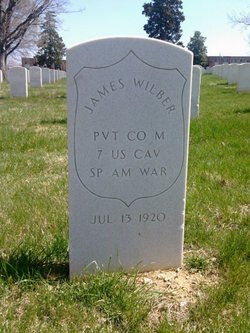
History Mystery: This week there are questions concerning James Wilber Darcy whose death is noted below. His surname had several spellings, and he also used the alias James Wilber. In fact, his gravestone (left) used his alias while his interment records (below) used James Darsey/Darcy. References compiled by Ron Nichols and Roger Williams listed him as Darcy/Darsey; Fred Wagner and Walter Camp listed him as Wilber. Another unusual fact about his gravestone is that it listed him as a participant in the Spanish-American War rather than the Indian Wars. He was admitted to the Soldiers’ Home in 1877 due to being partially paralyzed by wounds received during the Battle of the Little Bighorn, so he was likely confined there for over 40 years. Questions: Why does his gravestone identify him by his alias and list the Spanish-American War? Which name is the best to use, Darcy or Wilber?
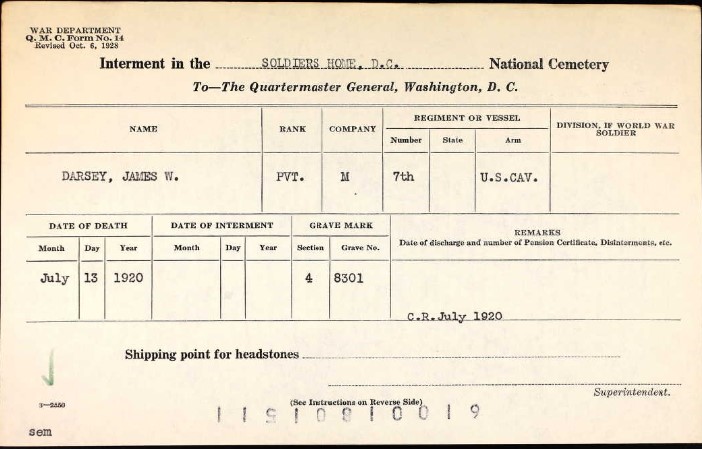
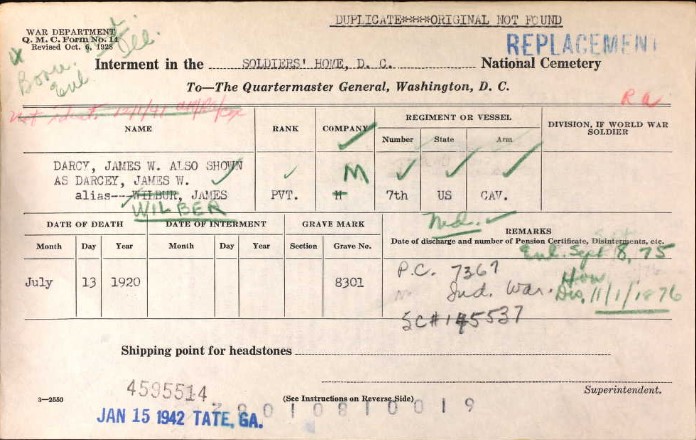
Please leave a comment if you would like to offer opinions or email the Little Bighorn History Alliance.
Now for this week’s milestones . . . .
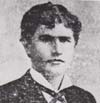
William Heyn (left) was born on July 12, 1848, in Bremen, Germany. He was a First Sergeant in Company A who participated in the valley and hilltop fights and was wounded.
John H. Meier died on July 12, 1917, in Washougal, Clark County, Washington, and was buried in the Washougal Memorial Cemetery there. He was a Private in Company M who participated in the valley and hilltop fights and was wounded.

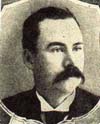
Thomas Joseph Callan (left) was born in County Louth, Ireland, on July 13, 1853. He was a Private in Company B who was with the pack train and in the hilltop fight. He was awarded the Medal of Honor on October 24, 1898, for his actions at the Little Bighorn.
James Wilber Darcy died at Barnes Hospital in Washington, D.C., on July 13, 1920, and was buried three days later in the Soldiers’ Home National Cemetery there. He was a Private in Company M who participated in the valley and hilltop fights and was wounded in the left leg on June 26, 1876.
William O’Mann was born on July 14, 1849, in Hamilton County, Indiana. He was a Private in Company D who participated in the hilltop fight.
Edward Hall died in Albany, New York, on July 14, 1914. He was a Private in Company G who was not present at the battle due to detached service.

Thomas W. Stivers was born on July 15, 1850, in Madison County, Kentucky. He was a Private in Company D who participated in the hilltop fight and was one of the water carriers who was awarded the Medal of Honor.
Henry Drago died on July 16, 1892, in Toledo, Ohio, and was buried in Mount Carmel Cemetery (also known as St. Mary’s Cemetery) there. He was a Sergeant in Company F who was not present at the battle due to detached service.
John Nolan died on July 17, 1893, in Newburgh, New York. He was a Corporal in Company K who was not present at the battle due to detached service.
Edward Gustave Mathey (left) died in Denver, Colorado, on July 17, 1915, and was buried in Arlington National Cemetery in Arlington, Virginia. He was the First Lieutenant of Company M who commanded the pack train and participated in the hilltop fight.
Jonathan J. Callahan was born on July 18, 1853, in Salem, Massachusetts. He was a Corporal in Company K who was killed with Custer’s Column.
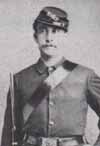
John B. McGuire, Jr., (left) was born in Indiana County, Pennsylvania, on July 18, 1854. He was a Private in Company C who rode with the pack train and was wounded in the hilltop fight.
Nikolaus [Nickolas] Klein died on July 18, 1904, in Cleveland, Ohio, and was buried in the West Park Cemetery there. He was a Private in Company F who was not present at the battle due to detached service.

Daniel Alexander Kanipe (left) died in Marion, North Carolina, on July 18, 1926, and was buried in the Oak Grove Cemetery there. He was a Sergeant in Company C who was with Custer’s Column and in the hilltop fight.
John Weiss died on July 18, 1927, in Durango, Colorado, and was buried in the Greenmount Cemetery there. He was a Private in Company A who was not present at the battle due to detached service.
2 thoughts on “This Week in Little Bighorn History”